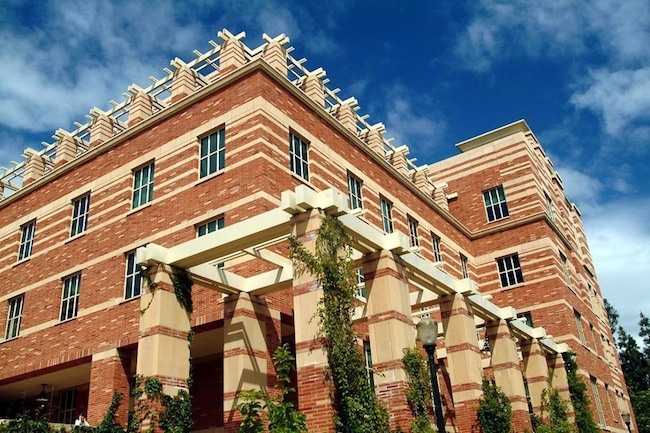A new study by the Williams Institute at UCLA School of Law revealed LGBT people face far more poverty than their straight and cisgender peers. The study also found that even among LGBT folks, bisexual women and trans people face an even higher level of poverty — as much as 10 percent more than lesbians and 20 percent more than gay men.
The Williams Institute analyzed data from the Behavioral Risk Factor Surveillance System survey that included a representative sample of LGBT people from 35 states from 2014-17. The study also examined how age, race, urbanicity, language, disability, education, marital status, health and employment status affect poverty.
Study author Bianca D.M. Wilson, the Rabbi Zacky Senior Scholar of Public Policy at the Williams Institute, said that “LGBT people are more likely to be people of color, young, and disabled,” which all are statuses and characteristics that alone elevate poverty rates.
“Some LGBT groups, such as gay men, are more likely to have higher levels of education, fewer children, and live in urban areas, which can help protect them from poverty. However, even when we control for these factors, we find LGBT people are still more likely to experience poverty than their cisgender straight counterparts,” Wilson added.
This news is especially bad for Philadelphia LGBT people. Philadelphia is the poorest of the 10 most populous cities in the U.S. One in four Philadelphians lives at or below the poverty level. Philadelphia also has the highest rate of deep poverty — people living at 50 percent of the poverty level or less.
Lauren Cox, Deputy Communications Director for Mayor Kenney, told PGN, “The findings of the Williams Institute’s study are, unfortunately, not surprising. We know that LGBTQ+ individuals are more likely to live in poverty, and that transgender people are particularly vulnerable.”
Cox said, “It is also clear that those who are part of other marginalized communities, including people of color and people with disabilities, see compounded effects of economic insecurity.”
The study data — 45 pages in all — indicates that nearly 22 percent of LGBT people in the U.S. experience poverty, compared to less than 16 percent of cisgender straight people. Among LGBT people, poverty rates differ by sexual orientation and gender identity with transgender people and cisgender bisexual women faring the worst. According to the data, 29.4 percent of bisexual women and trans people fall below the official poverty threshold.
“Our study shows that all subpopulations of LGBT people fare the same or worse than cisgender straight people,” said lead author M.V. Lee Badgett, a Distinguished Scholar at the Williams Institute. “And factors like living in a rural area can prove especially challenging to their economic stability. As a whole, LGBT people have at least 15 percent higher odds of being poor than cisgender straight people.”
Wilson also said these poverty numbers could be hypothesized to be caused by “experiences of discrimination, maybe the impact of minority stress, the impact of mental health concerns that come from experiencing discrimination.” She added, “However, how that explains the particularly high rate among bisexual women is not clear.”
The Oct. 8 employment discrimination cases being considered by the U.S. Supreme Court highlight how discrimination impacts poverty. If LGBT people can be fired — or not hired at all, as a recent ruling by the Trump administration now allows for federal contractors — due to sexual orientation and/or gender identity, their income is directly affected.
Key findings from the Williams Institute highlighted poverty rates differ by sexual orientation and gender identity. While most significant was the disparity for bisexual women and trans people, the study also found cisgender straight men and gay men have similar rates of poverty, and their poverty rates are lower than every other group.
The study also found cisgender lesbian women have similar rates of poverty as cisgender straight women, at nearly 20 percent. However, women of all sexual orientations have significantly higher rates of poverty than cisgender straight men and gay men.
One in five (21 percent) of LGBT people in urban areas live in poverty, and one in four (26.1 percent) in rural areas are poor, compared to about 16 percent of cisgender straight people in both areas.
Cox said, “While the overall findings of the study could be anticipated, some of the statistics are sobering.”
Citing the disparity for trans people and bisexual women, Cox asserted, “When you consider that Philadelphia’s current poverty rate is 24.5 percent, it is likely that our LGBTQ+ residents are suffering disproportionately, even compared to their peers in other parts of the country.”
She said the study from the Williams Institute “is an important reminder that we must continue to apply an inclusive lens in our approach to poverty reduction.”
It is essential that “LGBTQ+ people are able to access and benefit from key programs and resources such as affordable housing, health care, social services, workforce training, education and employment,” she added.
The entire study, which also has key chapters on race and age is available online in a PDF: https://williamsinstitute.law.ucla.edu/wp-content/uploads/National-LGBT-Poverty-Oct-2019.pdf
